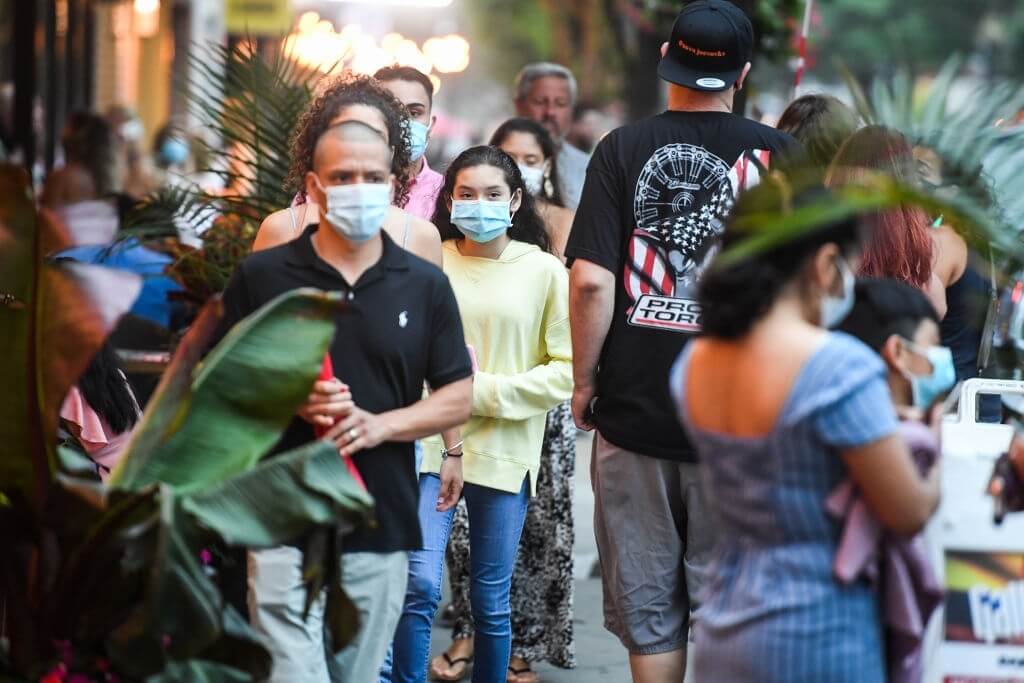The research is the first to quantify the overall burden and characteristics of COVID-19 in the United States in the year 2020. Using population, mobility, and verified case data, the researchers simulated SARS-CoV-2 transmission within and between all 3,142 U.S. counties.
According to a new study, by the end of 2020, 103 million Americans, or 31% of the population, will have been infected with SARS-CoV-2. It was published in the journal Nature.
One Out Of Every Three Americans At Least One Had COVID In The Year 2020
The study was conducted by experts in different fields as a team and multiple samples from different areas were studied for the same. The data was taken from different hospitals and sites as well as other sources that revealed these shocking facts of the USA when it battled against Covid-19 before a year.

Researchers at Columbia University’s Mailman School of Public Health analyzed the spread of the coronavirus and discovered that only around a quarter of infections (22%) were confirmed through public health reporting based on testing. Other samples were taken from some official sites and resources.
Despite testing detected an expanding number of illnesses, it provided an incomplete picture. The ascertainment rate, or the proportion of confirmed cases represented in the study’s estimations, increased from 11% in March to 25% in December, reflecting greater testing capacity, a relaxation of initial limits on test usage, and increased public awareness, concern, and care-seeking.
Individuals with mild or asymptomatic symptoms, who could still spread the virus, were less likely to get tested, therefore the ascertainment rate remained much below 100%.
“The great majority of contagious diseases were not accounted for by the number of proven cases,” says Jeffrey Shaman, Ph.D., of Columbia University’s Mailman School of Public Health’s Department of Environmental Health Sciences.
“It is these unreported cases, which are usually mild or asymptomatic infectious infections, that allow the virus to spread swiftly across the population.” In different parts of the country, infections were more widespread.
By the end of 2020, more than 60% of the population in the upper Midwest and Mississippi valley, along with the Dakotas, Minnesota, Wisconsin, and Iowa, is likely to be infected.
In the five metro areas studied, 48 percent of residents in Chicago, 52 percent in Los Angeles, 42 percent in Miami, 44 percent in New York City, and 27 percent in Phoenix became infected in the same timeframe.
At the end of the year, one out of every 130 Americans was contagious. On December 31, 2020, approximately 1 in 130 Americans (0.77 percent) was infected with SARS-CoV-2.
A similar fraction (0.83%) was assessed to be latently infected, meaning infected but not contagious. The percentage of people who were contagious by the end of the year was significantly greater in some metropolitan areas.
The number of people dying decreased as therapies and public health measures were enhanced. By the end of the year, the percentage of people who died from COVID-19 infections had decreased from 0.8 percent during the spring wave to 0.3 percent.
In the year 2021, a new pandemic scenario has emerged. The authors predict that a number of factors will alter the population’s sensitivity to infection in the future. The virus will continue to spread diseases that haven’t been sick yet.
Breakthrough infections, including those that are mild or asymptomatic, will contribute to the spread of the virus, even though immunizations protect against severe and fatal diseases.
Although there is evidence of waning antibodies and reinfection, the current study does account for the potential of reinfection. Reinfection and breakthrough infections are more likely as a result of new, more contagious types.